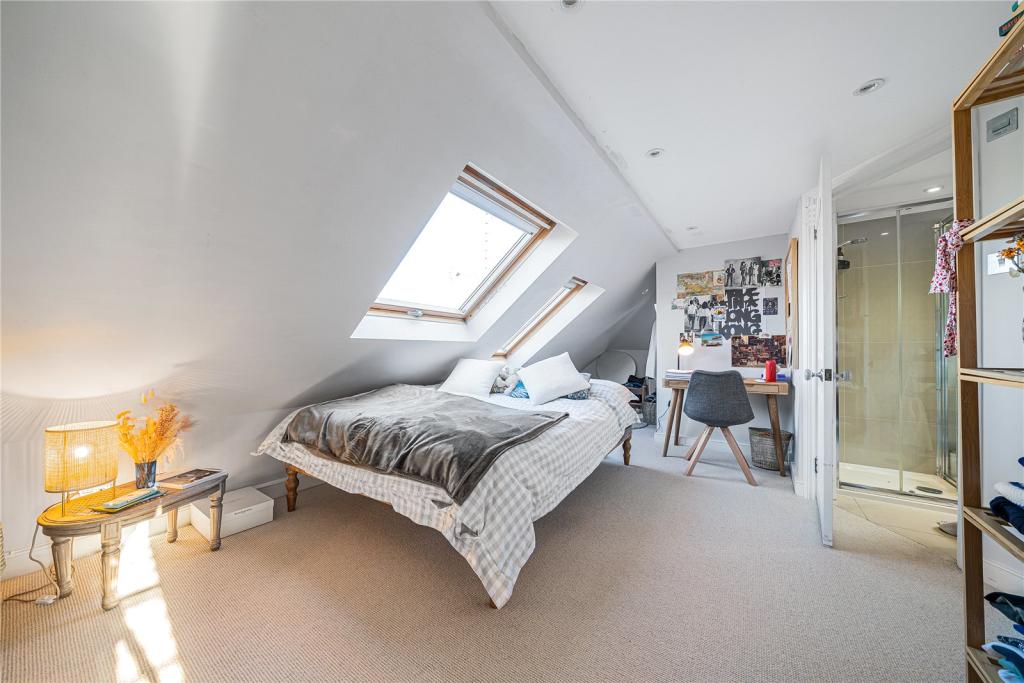If you’re looking to maximise your home’s potential, a Loft Conversion Sutton can be one of the most rewarding investments you make. For many homeowners, Sutton Loft Conversions that include a dormer are particularly appealing, thanks to their ability to increase headroom and usable floor space. Choosing an experienced Loft Conversion Company in Sutton ensures that your dormer design is both functional and visually in keeping with the character of your property.
Context – What is a Dormer Loft Conversion?
A dormer loft conversion involves extending the roof vertically to create more internal height and floor space. Unlike Velux conversions, which rely on the existing roof pitch, a dormer projects outward from the slope, creating a more squared-off interior. This allows for more comfortable standing space, larger windows, and a wider range of layout possibilities. Dormers are versatile, suitable for most property types, and often fall within permitted development rights, meaning planning permission may not be required.
Realness – Why Sutton Homeowners Choose Dormers
In Sutton, dormer conversions are a popular choice for families seeking to expand without moving. The extra height makes it easier to install full-sized furniture, while the vertical walls give a more traditional room feel. This is especially valuable in semi-detached and terraced houses, where roof angles can otherwise limit usability. Many Sutton properties have generous loft areas, and adding a dormer can turn these into bright, open spaces ideal for bedrooms, offices, or playrooms.
Intent – Advantages of Dormer Conversions
Dormer loft conversions offer several practical and financial benefits:
-
Maximised Space – Dormers create significantly more headroom, making the loft comfortable for everyday use.
-
Increased Property Value – In Sutton, a well-designed dormer conversion can boost resale value by up to 20%.
-
Design Flexibility – The extra wall space allows for fitted wardrobes, desks, and other furniture that might not fit under sloped ceilings.
-
Natural Light – Large windows or Juliet balconies can flood the space with daylight.
-
Cost-Effective Expansion – Compared to moving to a larger home, adding a dormer is generally more affordable and far less disruptive.
Signals – Planning and Building Considerations
Although many dormer loft conversions can be built under permitted development rights, there are limits on height, volume, and design. For example, the extension must not exceed 40 cubic metres for terraced houses or 50 cubic metres for detached and semi-detached properties. It must also be set back at least 20cm from the eaves and use materials similar in appearance to the existing house. Building regulations will always apply, covering areas such as structural safety, insulation, fire escape routes, and soundproofing. An experienced local specialist will ensure all rules are met.
People – Tailored Solutions for Sutton Homes
Every Sutton property is unique, which is why a one-size-fits-all approach rarely delivers the best results. A skilled design and build team can create a dormer that complements your home’s architecture, meets your lifestyle needs, and stays within your budget. For example, in period properties, materials can be matched to original brickwork or tiles to maintain kerb appeal. In modern homes, clean lines and larger windows can give a contemporary finish. The right team will also help you navigate any neighbour consultations, party wall agreements, and local council requirements.
Types of Dormer Loft Conversions
There’s more than one kind of dormer, and each has its own advantages:
-
Flat Roof Dormer – Offers the maximum internal space and headroom, making it ideal for larger rooms.
-
Pitched Roof Dormer – More in keeping with traditional house styles, blending better with existing architecture.
-
L-Shaped Dormer – Often used in Victorian or Edwardian properties with rear additions, creating very large loft rooms.
-
Mansard Dormer – A more substantial alteration with a sloped front and flat top, often used to maximise space in urban areas.
Choosing the right style depends on your home’s structure, your planning constraints, and your intended use for the loft space.
Cost vs. Return
In 2025, the average cost of a dormer loft conversion in Sutton ranges from £30,000 to £60,000, depending on size, complexity, and finish level. While this is a significant investment, the increase in property value—combined with the extra space—often makes it financially worthwhile. Energy-efficient design features, such as high-performance insulation and double glazing, can also help lower running costs over time.
Making the Right Decision
A dormer loft conversion can be an excellent way to add usable space without sacrificing your garden or extending at ground level. It’s especially well-suited to homeowners who want to create large, airy rooms with plenty of natural light. However, the success of the project depends on expert design, careful planning, and skilled construction.
Final Word
For Sutton homeowners seeking both style and functionality, a dormer loft conversion can deliver outstanding results. It offers a balance of practicality, value, and aesthetic appeal, transforming an underused attic into a space that truly enhances your home. By working with professionals who understand local building rules and design trends, you can be confident your new loft will be a smart, long-term investment.









